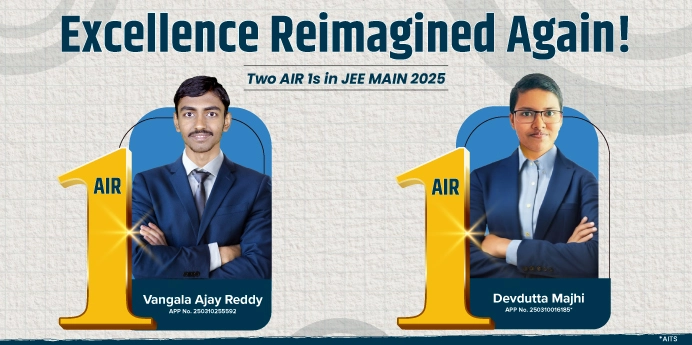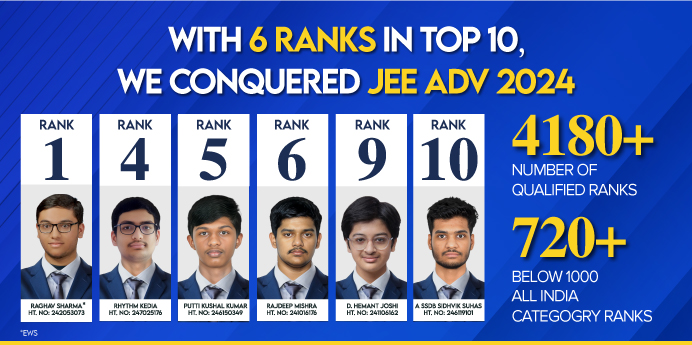










Courses

By Swati Singh
|
Updated on 8 Sep 2025, 18:45 IST
Breathing and Exchange of Gases MCQ: Preparing for the CBSE Class 11 Biology Board Exam 2024 includes practicing MCQs from Chapter 14, “Breathing and Exchange of Gases.” These questions assess understanding with clear right or wrong answers. They cover respiratory organs, breathing mechanisms, gas exchange in tissues, and regulatory processes in respiration. Practicing these MCQs helps students to enhance the concept and perform well in the exam’s initial section, boosting confidence and understanding of respiratory biology.
Breathing and Gas Exchange MCQ for Class 11 is a valuable tool for students preparing for the NEET exam, which is crucial for medical studies. This topic focuses on the mechanics of breathing and the process of gas exchange, essential concepts in understanding human physiology.
The MCQ on Breathing and Exchange of Gases covers various aspects such as the functioning of the lungs, the physiology of respiration, and the mechanisms involved in gas exchange. By practicing these questions, students can solidify their knowledge and enhance their preparation for the biology section of the NEET exam as well as for class 11 exams.
1. The process of inspiration occurs when:
a) Intra-pulmonary pressure is more than atmospheric pressure
b) Intra-pulmonary pressure is less than atmospheric pressure
c) Intra-pulmonary pressure equals atmospheric pressure

d) None of these
Answer: b) Intra-pulmonary pressure is less than atmospheric pressure

JEE

NEET

Foundation JEE

Foundation NEET

CBSE
Solution: During inspiration, lung volume increases → pressure inside lungs decreases → air rushes in.
2. The normal breathing rate in a healthy adult human is:
a) 10–12 times/min
b) 12–16 times/min

c) 18–20 times/min
d) 25–30 times/min
Answer: b) 12–16 times/min
Solution: Average human respiratory rate is ~14–16 per minute.
3. Which structure is the actual site of gaseous exchange?
a) Trachea
b) Bronchi
c) Alveoli
d) Bronchioles
Answer: c) Alveoli
Solution: Alveoli provide a large surface area and thin walls for efficient exchange.
4. The maximum volume of air a person can inhale after normal expiration is:
a) Tidal volume
b) Vital capacity
c) Inspiratory capacity
d) Residual volume
Answer: c) Inspiratory capacity
Solution: Inspiratory capacity = Tidal volume + Inspiratory reserve volume.
5. Which is the primary muscle involved in breathing?
a) Intercostal muscles
b) Abdominal muscles
c) Diaphragm
d) Pharyngeal muscles
Answer: c) Diaphragm
Solution: Contraction/relaxation of diaphragm changes thoracic volume.
6. Average tidal volume in an adult is:
a) 100 mL
b) 250 mL
c) 500 mL
d) 1000 mL
Answer: c) 500 mL
7. Residual volume is:
a) Volume of air remaining after maximal expiration
b) Volume of air inhaled during normal breathing
c) Maximum volume inhaled after normal expiration
d) Volume exchanged during normal breathing
Answer: a) Volume of air remaining after maximal expiration
8. Vital capacity (VC) =
a) TV + ERV + IRV
b) TV + RV + IRV
c) IC + FRC
d) VC + RV
Answer: a) TV + ERV + IRV
9. Total lung capacity (TLC) in an average adult is about:
a) 2 L
b) 4 L
c) 5 L
d) 6 L
Answer: d) 6 L
10. Which lung volume cannot be measured by spirometer?
a) Tidal volume
b) Residual volume
c) Vital capacity
d) Inspiratory reserve volume
Answer: b) Residual volume
11. Most of the oxygen in blood is transported as:
a) Dissolved in plasma
b) As oxyhemoglobin
c) As free oxygen atoms
d) Bound to bicarbonates
Answer: b) As oxyhemoglobin
12. Each hemoglobin molecule can carry how many molecules of oxygen?
a) 1
b) 2
c) 3
d) 4
Answer: d) 4
13. Percentage of CO₂ carried as bicarbonate in blood is:
a) 10%
b) 20–30%
c) 60–70%
d) 80–90%
Answer: c) 60–70%
14. Haldane effect is related to:
a) Binding of O₂ with Hb
b) Binding of CO₂ with Hb
c) O₂ facilitates unloading of CO₂
d) CO₂ facilitates unloading of O₂
Answer: c) O₂ facilitates unloading of CO₂
15. Bohr effect refers to:
a) Increase in O₂ binding with Hb at high CO₂
b) Decrease in O₂ binding with Hb at high CO₂
c) No change in O₂ binding
d) Only seen in animals
Answer: b) Decrease in O₂ binding with Hb at high CO₂
16. Respiratory rhythm centre is located in:
a) Cerebrum
b) Cerebellum
c) Medulla oblongata
d) Hypothalamus
Answer: c) Medulla oblongata
17. Pneumotaxic centre that controls breathing rate is in:
a) Medulla
b) Pons
c) Cerebellum
d) Spinal cord
Answer: b) Pons
18. Chemosensitive area regulating breathing is near:
a) Carotid artery
b) Aorta
c) Medulla oblongata
d) Diaphragm
Answer: c) Medulla oblongata
19. Main chemical regulator of respiration is:
a) O₂ concentration in blood
b) CO₂ concentration in blood
c) pH of saliva
d) Nitrogen concentration
Answer: b) CO₂ concentration in blood
20. Increased CO₂ in blood is called:
a) Hypoxia
b) Hypercapnia
c) Asphyxia
d) Apnea
Answer: b) Hypercapnia
21. Inflammation of bronchi is known as:
a) Bronchitis
b) Asthma
c) Emphysema
d) Pneumonia
Answer: a) Bronchitis
22. Which disease is due to damage of alveolar walls?
a) Asthma
b) Emphysema
c) Tuberculosis
d) Pneumonia
Answer: b) Emphysema
23. Asthma is caused by:
a) Allergy causing narrowing of bronchi
b) Infection of alveoli
c) Bacterial infection
d) Reduced hemoglobin
Answer: a) Allergy causing narrowing of bronchi
24. Oxygen deficiency at tissue level is called:
a) Asphyxia
b) Hypoxia
c) Apnea
d) Hypercapnia
Answer: b) Hypoxia
25. In mountain sickness, oxygen saturation decreases due to:
a) Less hemoglobin
b) Low partial pressure of oxygen
c) High CO₂ levels
d) Thick blood
Answer: b) Low partial pressure of oxygen
26. How many oxygen molecules are carried by 100 mL of oxygenated blood under normal conditions?
a) 5 mL
b) 10 mL
c) 20 mL
d) 25 mL
Answer: c) 20 mL
27. The chloride shift in RBCs is associated with:
a) O₂ transport
b) CO₂ transport
c) pH balance
d) Nitrogen transport
Answer: b) CO₂ transport
28. The respiratory pigment in humans is:
a) Hemocyanin
b) Hemoglobin
c) Myoglobin
d) Chlorocruorin
Answer: b) Hemoglobin
29. In alveoli, PO₂ is about:
a) 40 mmHg
b) 60 mmHg
c) 104 mmHg
d) 120 mmHg
Answer: c) 104 mmHg
30. In tissues, PCO₂ is:
a) 40 mmHg
b) 45 mmHg
c) 104 mmHg
d) 20 mmHg
Answer: b) 45 mmHg
31. Oxygen dissociation curve is sigmoid because:
a) Cooperative binding of O₂ to Hb
b) Competitive inhibition
c) Constant O₂ affinity
d) Random O₂ binding
Answer: a) Cooperative binding of O₂ to Hb
32. During exercise, oxygen dissociation curve shifts:
a) Right
b) Left
c) Stays constant
d) Downward only
Answer: a) Right
Solution: Right shift means more O₂ is released to tissues.
33. FEV₁ (Forced expiratory volume in 1 second) is useful for diagnosing:
a) Pneumonia
b) Asthma
c) Emphysema
d) All of these
Answer: d) All of these
34. Carboxyhemoglobin is formed by binding of hemoglobin with:
a) CO₂
b) CO
c) NO₂
d) CH₄
Answer: b) CO
35. The affinity of hemoglobin for CO is how many times more than O₂?
a) 10 times
b) 50 times
c) 200–250 times
d) 500 times
Answer: c) 200–250 times
36. In expiration, diaphragm becomes:
a) Flat
b) Dome-shaped
c) Contracted
d) Inactive
Answer: b) Dome-shaped
37. Functional residual capacity (FRC) =
a) ERV + RV
b) TV + ERV
c) TV + RV
d) IC + ERV
Answer: a) ERV + RV
38. Which of the following is the universal respiratory substrate?
a) Carbohydrates
b) Proteins
c) Fats
d) Organic acids
Answer: a) Carbohydrates
39. The most important factor in determining O₂ binding with Hb is:
a) PO₂
b) PCO₂
c) Temperature
d) pH
Answer: a) PO₂
40. Which is true about myoglobin?
a) Found in blood
b) Respiratory pigment in muscles
c) Has lower affinity for O₂ than Hb
d) Found only in lungs
Answer: b) Respiratory pigment in muscles
41. Normal oxygen concentration in alveoli is about:
a) 16%
b) 21%
c) 40%
d) 10%
Answer: a) 16%
42. Which is not a part of respiratory passage?
a) Pharynx
b) Trachea
c) Larynx
d) Esophagus
Answer: d) Esophagus
43. Breathing is controlled by:
a) Autonomic nervous system
b) Voluntary nervous system only
c) Both autonomic and voluntary nervous system
d) None
Answer: c) Both autonomic and voluntary nervous system
44. The collapse of alveoli due to deficiency of surfactant is called:
a) Asthma
b) Atelectasis
c) Emphysema
d) Tuberculosis
Answer: b) Atelectasis
45. Minute volume of respiration =
a) Tidal volume × Respiratory rate
b) IRV × ERV
c) TV + ERV
d) IC – TV
Answer: a) Tidal volume × Respiratory rate
No courses found
Breathing is the physical process of inhaling and exhaling air (ventilation).
Respiration is a biochemical process where oxygen is used to produce energy (ATP) from food.
A healthy adult breathes about 12–16 times per minute, which means around 21,000–23,000 breaths per day.
Alveoli are tiny sac-like structures in the lungs where actual gaseous exchange occurs. They provide a large surface area and thin walls for efficient diffusion of oxygen and carbon dioxide.
Tidal Volume (TV): Air exchanged during normal breathing (~500 mL).
Inspiratory Reserve Volume (IRV): Extra air inhaled beyond TV (~2500–3000 mL)
Expiratory Reserve Volume (ERV): Extra air exhaled beyond TV (~1000–1100 mL).
Residual Volume (RV): Air left after maximum exhalation (~1100–1200 mL).
VC is the maximum air a person can breathe in after forced expiration.
Formula: VC = TV + IRV + ERV
Hemoglobin in RBCs binds to oxygen to form oxyhemoglobin. Each hemoglobin molecule carries up to 4 molecules of oxygen. About 97% of O₂ is transported this way.
~70% as bicarbonate ions (HCO₃⁻)
~20–25% as carbaminohemoglobin (HbCO₂)
~5–7% dissolved in plasma
The Bohr effect explains that high CO₂ concentration or low pH reduces hemoglobin’s affinity for O₂, facilitating oxygen release in tissues.
The Haldane effect states that oxygenation of blood in the lungs helps release CO₂ from hemoglobin, aiding CO₂ unloading.
Medulla oblongata → controls respiratory rhythm (involuntary).
Pons → regulates rate and depth of breathing.
Voluntary control is possible via the cerebral cortex.
Inspiration: Diaphragm contracts & flattens, thoracic volume increases, pressure drops, air enters.